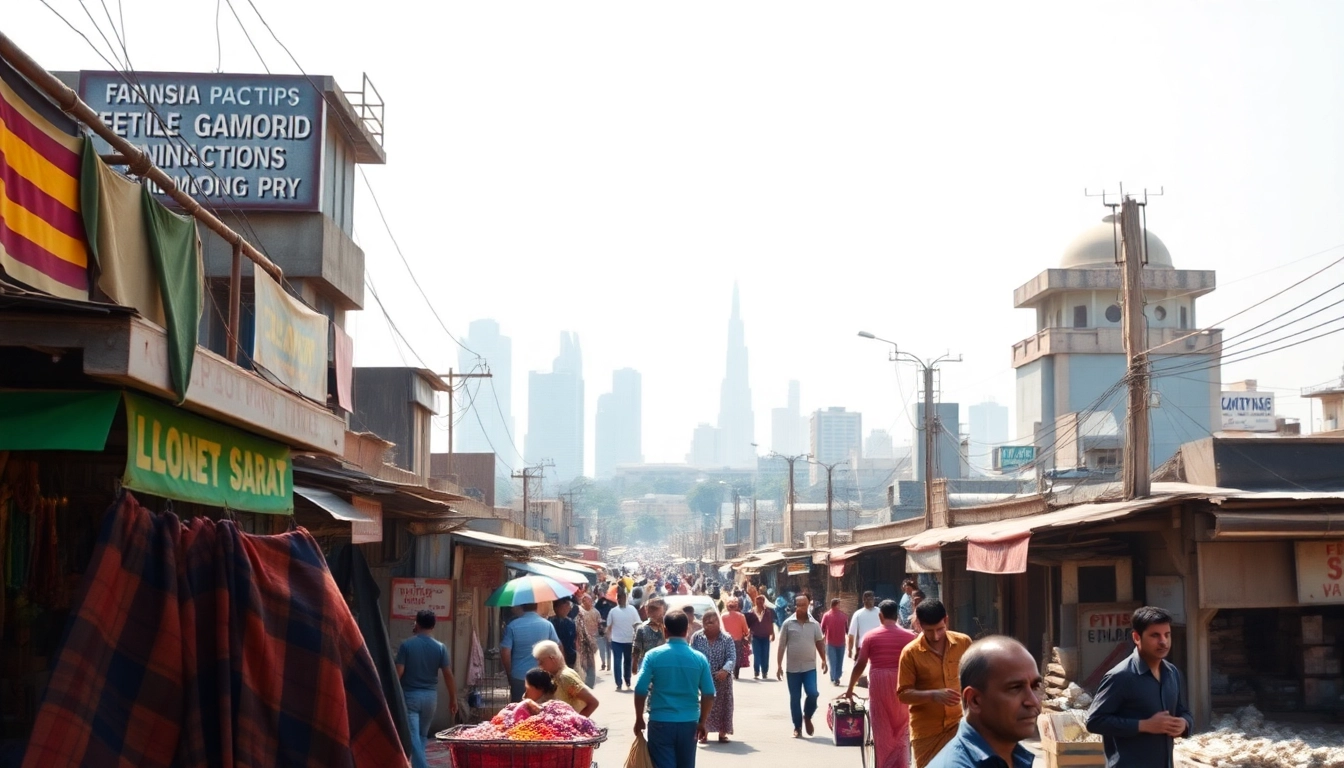Overview of Surat Economy
The city of Surat, located in the Indian state of Gujarat, has emerged as a significant contributor to the Indian economy, particularly noted for its vibrant surat economy. As one of the fastest-growing cities globally, Surat is known for its rich economic landscape that encompasses various industrial sectors, chiefly textiles and diamonds. This article delves into the various aspects surrounding Surat’s economy, examining its geographical context, historical backgrounds, major economic sectors, and future outlook.
Geographical and Demographic Context
Surat is strategically situated along the Tapi River and is well-connected via road, rail, and air to other major cities, enhancing its accessibility for trade and commerce. With a population of over 6 million, Surat’s demographic profile is marked by a young workforce, which is pivotal for sustaining its economic growth. The city’s climate, characterized by a significant monsoon influence, plays a role in the agricultural backdrop of the region, with nearby rural areas engaged in related activities.
Historical Economic Development
Surat’s economic transformation traces back centuries, starting as a port city that facilitated trade with important global markets. Historically recognized for its tapestry of cultures and a melting pot of trade, Surat saw substantial growth during the Mughal era and played a crucial role in the spice trade. As the industrial revolution paced into India, Surat shifted focus from traditional businesses to modern manufacturing, culminating in its current status as a powerhouse for textiles and diamonds.
Key Economic Sectors
Several industries contribute to Surat’s economic framework. The textile manufacturing sector, which is the backbone, is complemented by diamond processing and burgeoning sectors like chemicals and information technology. Understanding the composition of these economic sectors is essential for analyzing Surat’s overall economic health and growth potential.
Major Drivers of Economic Growth in Surat
Textile Manufacturing
Surat ranks as one of the largest textile hubs in India, renowned for producing a vast range of polyester fabrics and embroidered textiles. The city’s textile production is supported by numerous small and medium enterprises, which contribute significantly to both local employment and exports. The establishment of textile parks and clusters has further augmented this sector, enhancing productivity and investment.
Diamond Industry Dynamics
Often referred to as the ‘Diamond City of India’, Surat processes a significant portion of the world’s diamonds. The diamond industry not only generates employment for thousands but also adds considerable value to the economy. Advanced technology and skilled labor have positioned Surat as a leader in diamond cutting and polishing, making it a crucial player in the global diamond market.
Emergence of New Industries
Beyond textiles and diamonds, Surat is witnessing the emergence of new industries, including information technology and renewable energy, as the city diversifies its economic base. Startups are becoming increasingly prevalent, supported by a growing entrepreneurial culture and favorable policies from local governance. The focus on sustainable practices and digital transformation will define Surat’s industrial future.
Workforce and Employment Trends in Surat Economy
Labor Force Overview
The labor force in Surat exceeds 1.9 million, with a significant percentage employed in the manufacturing sector. The city’s vibrant economic ecosystem has attracted an influx of skilled and semi-skilled laborers, creating a competitive labor market. However, the region must continue to enhance labor productivity to meet the demands of a rapidly evolving economic landscape.
Skill Development and Education
To fortify its workforce, Surat has invested in various educational and vocational training programs to equip individuals with skills relevant to modern industries. Initiatives aimed at bridging the skill gap are essential for ensuring that the city remains competitive in the face of new technological advancements and industry requirements.
Employment Challenges and Solutions
Despite its robust economic growth, Surat faces several employment challenges, including the necessity for skilled labor and job mismatch. Solutions such as enhanced collaboration between industry and educational institutions, alongside government initiatives to foster entrepreneurship, are crucial to addressing these challenges effectively.
Government Initiatives Impacting Surat Economy
Support for Manufacturing and Trade
Government initiatives have played a significant role in nurturing Surat’s manufacturing and trade sectors. Policies aimed at promoting ease of doing business, alongside tax incentives for businesses, have catalyzed growth within the city. By fostering a conducive environment for industry players, Surat can sustain its competitive edge.
Infrastructure Development Plans
A comprehensive plan for infrastructure development is paramount for Surat, given its emergence as a key economic region. Investments in transport, utilities, and technology are crucial for supporting economic activities and enhancing the overall quality of life for its residents.
Policies Promoting Startups and Innovation
The government’s commitment to fostering innovation has resulted in several initiatives aimed at supporting startups. Innovation hubs and incubation centers are being established to catalyze growth in technology-driven businesses. This strategic focus on creative sectors will help diversify Surat’s economic base further.
Future Outlook for Surat Economy
Growth Projections and Economic Goals
Looking ahead, Surat is well-positioned to continue its trajectory of growth, with projections indicating substantial increases in GDP and employment opportunities. Goals set by local authorities for sustainable economic practices, alongside an emphasis on digitalization, position Surat as a model for other cities aspiring for similar economic revitalization.
Challenges Ahead: Navigating Risks
Nevertheless, Surat must navigate challenges such as environmental sustainability, digital transformations, and ensuring equitable urban development. Addressing these risks is essential for sustaining economic growth while fulfilling the community’s social and environmental aspirations.
Strategies for Sustainable Development
Implementing strategies for sustainable development will be pivotal for Surat’s future economy. This includes promoting renewable energy, creating eco-friendly manufacturing processes, and developing green spaces within urban areas to ensure a high quality of life for residents. By prioritizing sustainable practices, Surat can lead as a beacon of modern urban economic growth.
